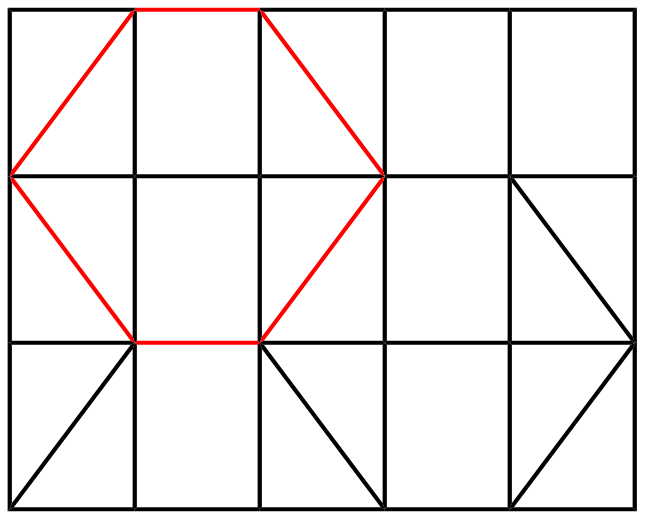I'm prototyping a base-building game that uses a hex grid as the basic structure. Hex grids have benefits, but when humans want to build buildings or divide up space, they usually use square/rectangular shapes. How can I allow players to lay out spaces that look or feel right, while playing nicely on the hex grid?
One option I think I could use is to align rectangles with the centers of hexes. This allows for some hexes to clearly fall "inside" or "outside" the region, but also introduces three new hex/rect intersection types: an edge-to-edge half, a vertex-to-vertex half, and a corner.
Another option would simply be to make buildings and regions hex-based as well - they could be drawn in any arbitrary fashion on the grid and would have clean boundaries, but would probably feel strange to someone who just wants to build a square building.
Or is this just a sign that I should be using a square grid?


